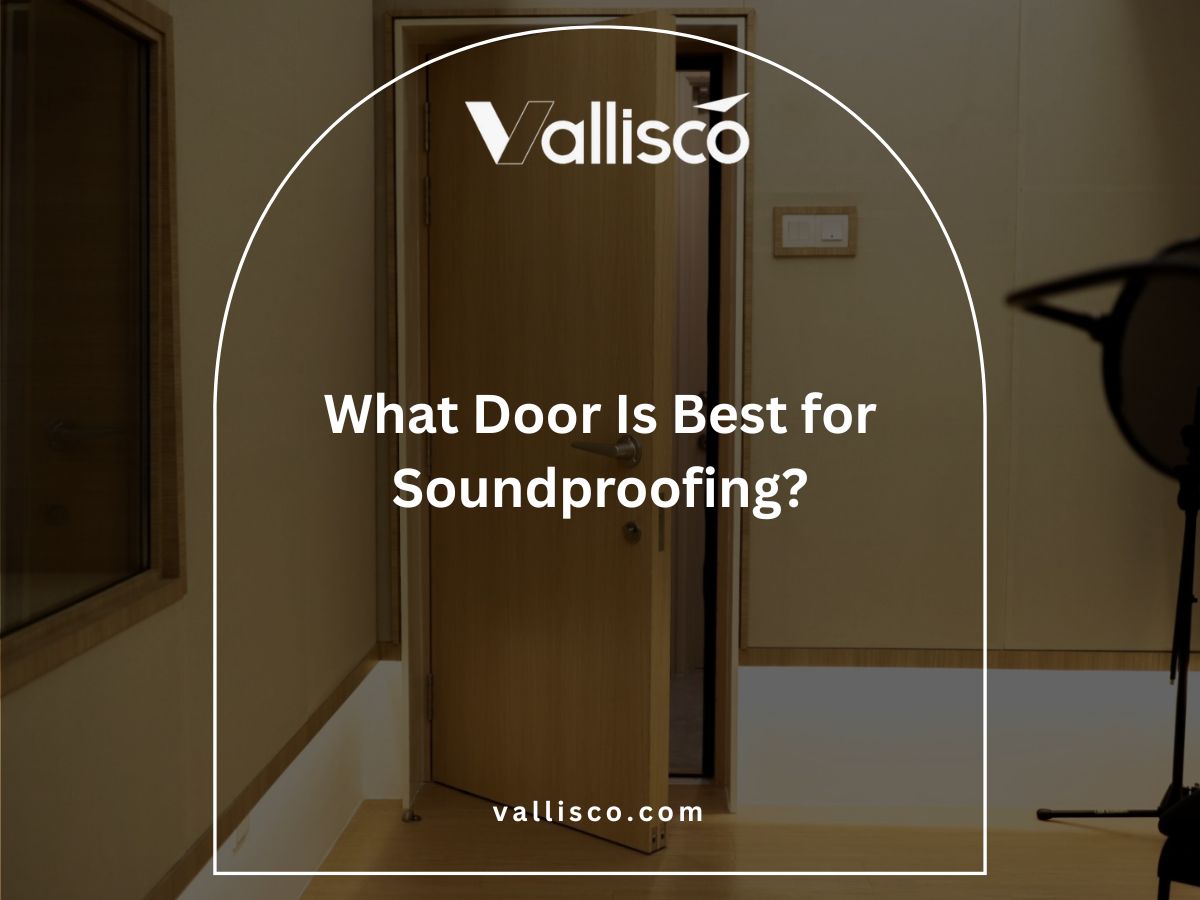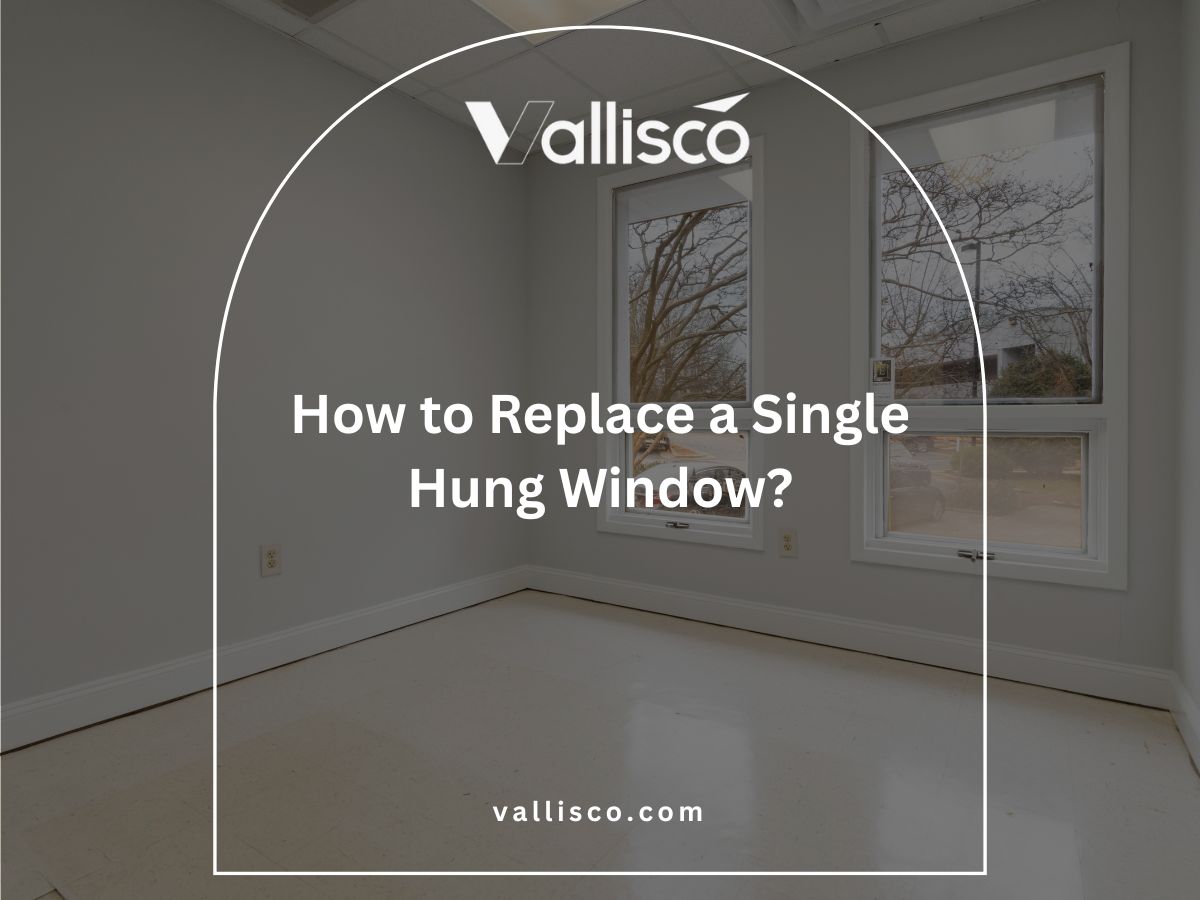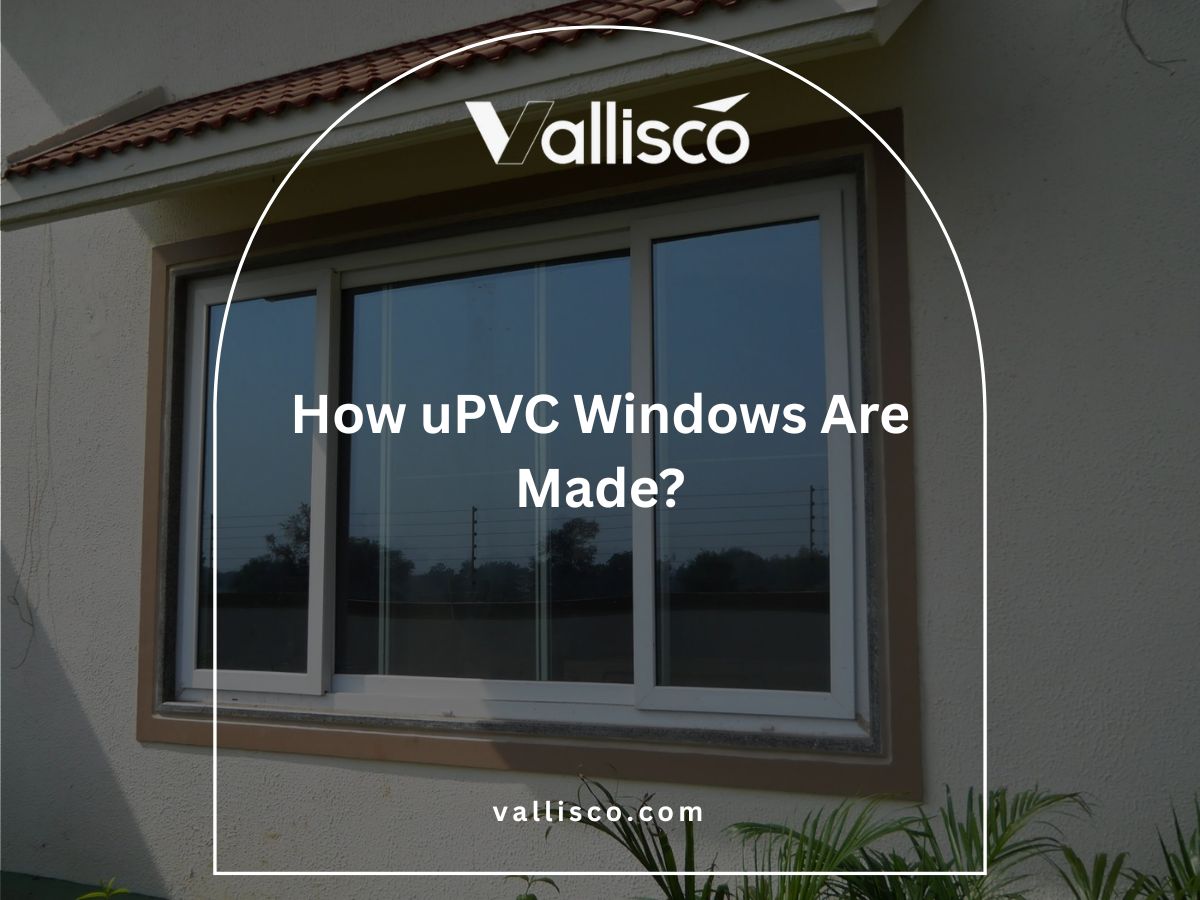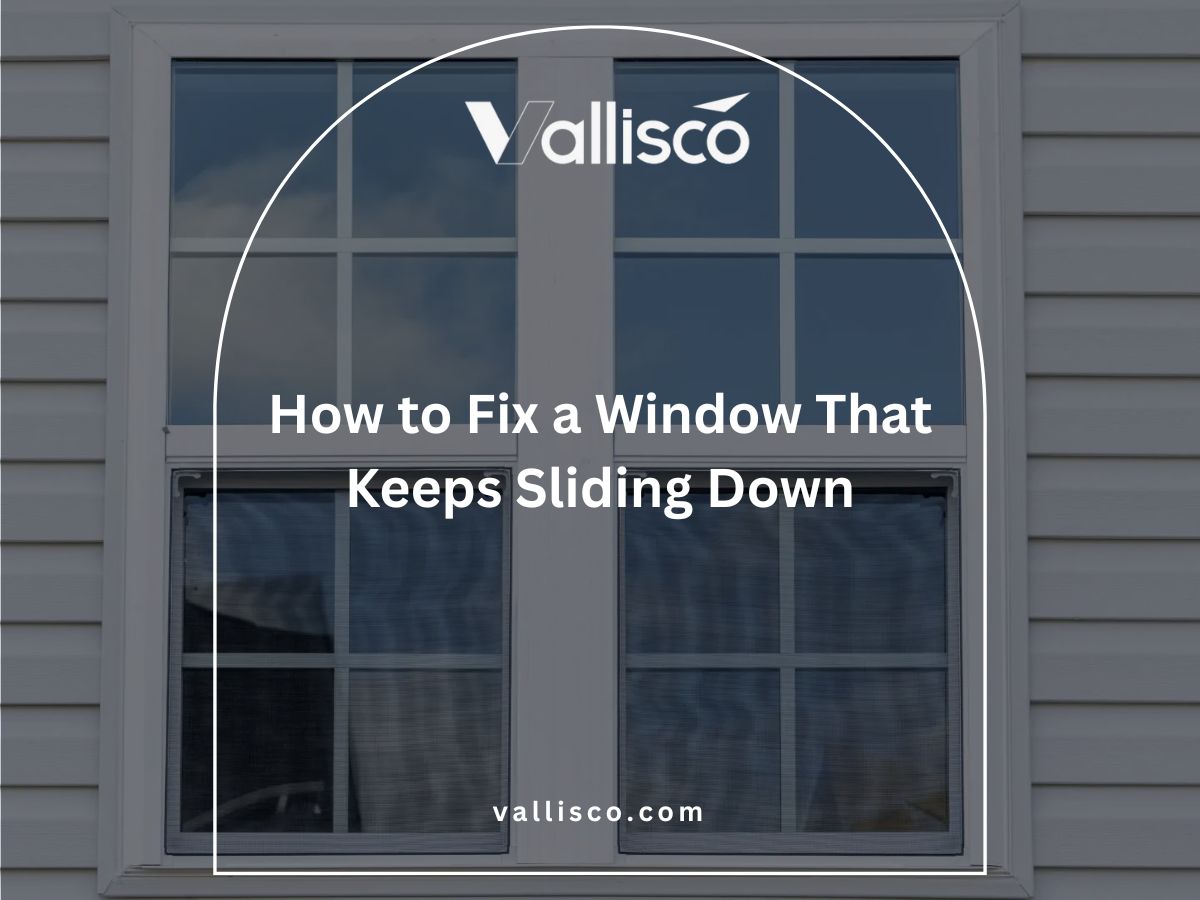During a greenhouse build, the contractor installed a solid wood interior door at the main entrance, even though it should have been an exterior door. It warped in less than a month.
That mistake cost the owner extra time and budget they had not planned for.
I’ve seen these errors over my years in the building supply field and I’ve learned what separates a good choice from a costly one.
In this guide, you will see the practical side-by-side differences between exterior and interior doors with details you can apply right away to your own projects.
One wrong door can cost you money. The right one saves you from headaches.
So, let’s dive in!
Comparison Table
Before we go deeper, here’s a quick side-by-side look at the main differences between exterior and interior doors. This table gives you a snapshot of how each type performs across key areas.
| Feature | Exterior Door | Interior Door |
| Material Strength & Thickness | 1¾–2 inches thick, steel, fiberglass, or solid wood. Strong frame and weather layers. | About 1⅜ inches thick, hollow core, MDF, or light wood. Simple frame, no weather layers. |
| Security Capabilities | Heavy locks, strong frame, impact-resistant, secure glass. | Basic locks, light frame, hollow or solid core, light hardware. |
| Weather Resistance | Seals, UV coating, rust-proof hardware, resists heat and cold. | No seals, basic finish, standard hardware, indoor use only. |
| Insulation & Energy Efficiency | Foam or solid core, tight seals, thermal breaks, insulated glass. | Hollow or solid core, no thermal breaks, standard gaps. |
| Soundproofing | Solid core, seals, sound glass, strong frame. | Solid core option, door sweeps, thicker panels, fitted frame. |
| Design & Aesthetics | Many styles, premium finishes, glass options, custom hardware. | Panel styles, finish choices, different materials, glass inserts. |
| Cost Differences | Higher cost for strong materials, hardware, and weatherproofing. | Lower cost, light materials, simple hardware, quick install. |
Ready to dig deeper? Let’s look at each feature and how it impacts function, cost, and long-term use.
1. What Is an Exterior Door?
Exterior doors are built to handle the demands of outdoor conditions. They face rain, wind, sunlight, and heavy use, so they need stronger materials and reliable sealing. Compared to interior doors, they are designed to protect the inside of a building from both weather and unwanted entry.
If you manage projects for villas, hotels, or greenhouses, you know how much the right exterior door matters. I have seen how the right choice can improve security, reduce maintenance problems, and add to the overall appearance of the property. Selecting the right one gives your clients long-term value and reliable performance.
2. What Is an Interior Door?
Interior doors are made for spaces inside a building where they are protected from harsh weather. Their main role is to separate rooms, provide privacy, and match the overall style of the interior. Since they are not built to face outdoor conditions, they can be lighter and offer more design variety.
For projects in villas, hotels, or greenhouses, the right interior door still plays an important role. I’ve worked with doors that help reduce noise between rooms, improve daily use, and match the look your clients expect. They can also be easier and quicker to replace when needed.
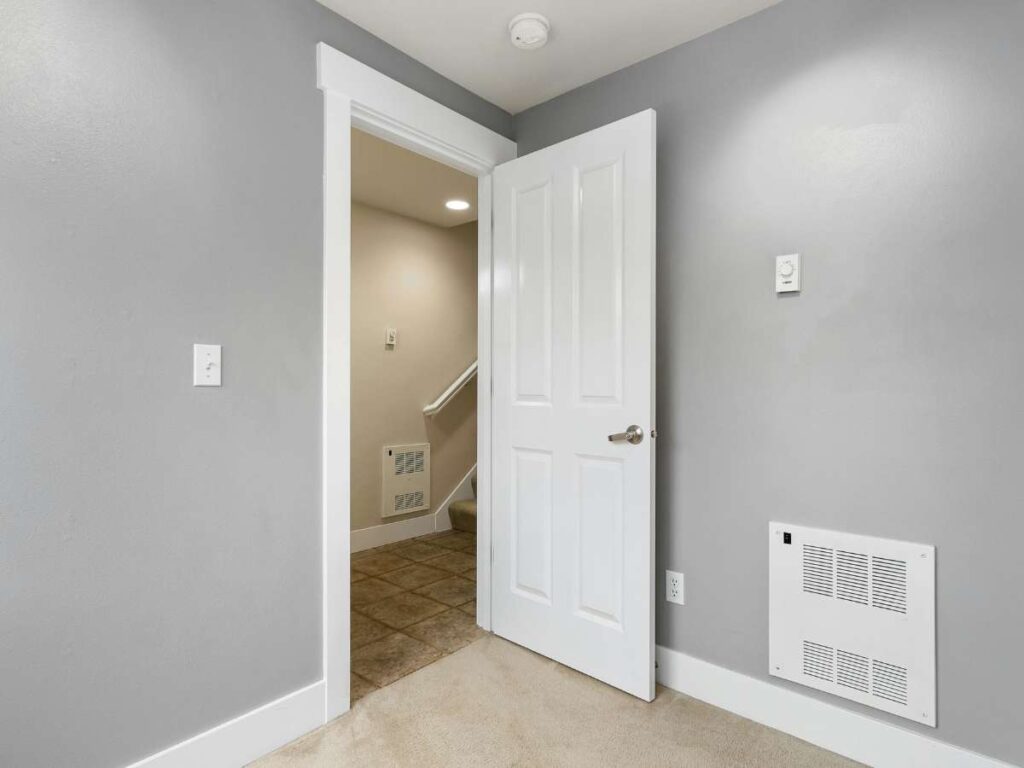
3. Material Strength & Thickness
I’ve learned that material strength and thickness are two of the biggest factors that separate exterior doors from interior ones. These details affect durability, security, and how long the door will hold up in real conditions. If you choose the wrong specs, you risk higher maintenance costs and unhappy clients.
Exterior Door: Built for Strength
- Thicker Construction: Usually between 1¾ inches and 2 inches. This added thickness helps the door resist heavy impacts and makes it harder to break through.
- Solid Materials: Often made from steel, fiberglass, or solid hardwood. These materials hold up against weather, wear, and physical damage better than lighter options.
- Reinforced Frames: Built to hold heavy-duty locks and hinges. A stronger frame means the door stays secure and aligned over years of use.
- Weather Protection Layers: Comes with seals and protective coatings. These keep out moisture and prevent swelling or warping over time.
Interior Door: Lighter and Flexible
- Standard Thickness: Around 1⅜ inches. This lighter build makes installation faster and easier, especially on larger projects.
- Lightweight Materials: Commonly hollow core, MDF, or light solid wood. These keep costs down and make the door easier to handle.
- Simple Frame Design: Frames do not require the same reinforcement as exterior doors. This makes them quicker to prepare and fit into place.
- No Weather Layers: Lacks seals or weather coatings. This is fine for indoor use where temperature and moisture are controlled.
Bottom Line
If you want a door that stands up to security demands and outdoor elements, exterior doors need the strength and thickness to match. If your focus is on interior spaces, lighter doors are easier to install and cost less without sacrificing indoor function.
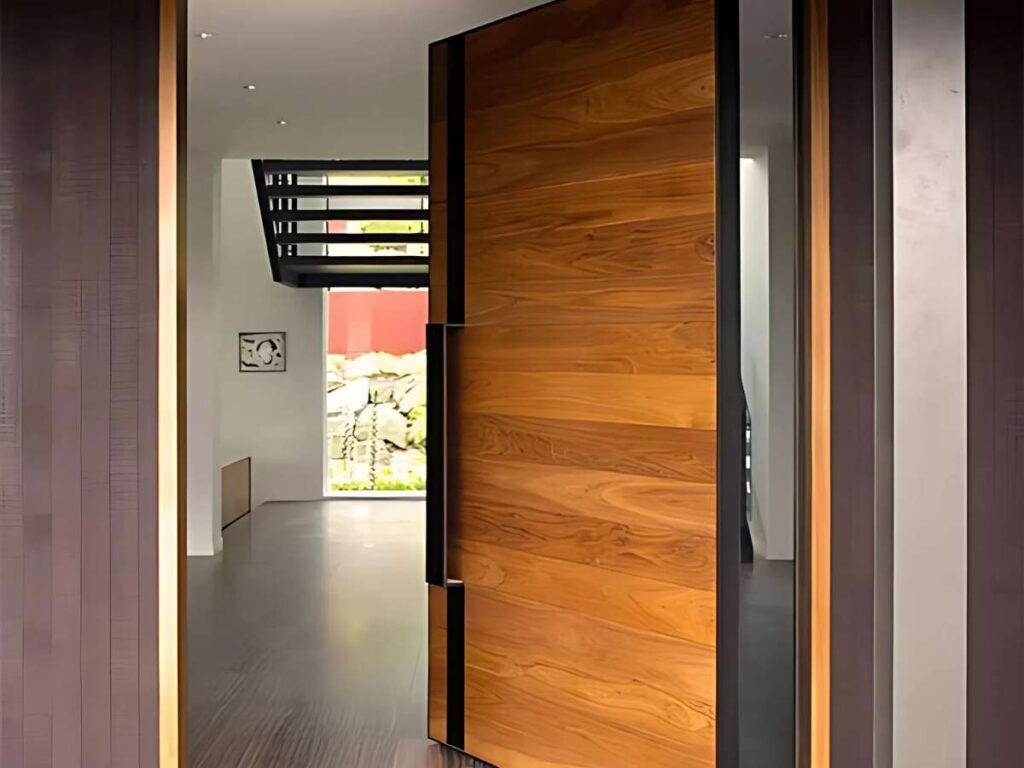
4. Security Capabilities
In many projects I’ve worked on, door security has been the deciding factor between smooth operations and costly issues later. The right door protects the building, keeps people safe, and reduces the risk of forced entry. When you match the security features to the space, you make sure it performs the way your client needs.
Exterior Door: Maximum Protection
- Stronger Lock Systems: Designed to work with deadbolts, multi-point locks, and advanced security hardware. This setup makes forced entry much more difficult.
- Reinforced Frames: Built with steel or hardwood inserts. I’ve learned that a strong frame is just as important as the door itself.
- Impact Resistance: Can withstand heavy blows without cracking or breaking. This adds a physical barrier against intruders.
- Security Glass Options: If glass is included, it’s often laminated or tempered. This makes it harder to shatter and slows down break-ins.
Interior Door: Basic Security
- Standard Lock Options: Usually supports simple latch locks or privacy knobs. This works for separating rooms but not for high security.
- Lightweight Frame: Often made from basic wood or MDF. It is functional for indoor use but not designed for high-impact situations.
- Hollow or Solid Core: Hollow core offers minimal protection, while solid core gives more strength. Choose based on the room’s needs.
- Limited Hardware Strength: Handles and hinges are lighter and easier to replace but not built for heavy-duty protection.
Bottom Line
If you want a door that can handle security demands and resist forced entry, exterior doors are the right choice. They offer stronger materials, reinforced frames, and locking systems built for protection. For interior spaces, lighter doors are easier to install, cost less, and still provide the privacy your clients need.

5. Weather Resistance
On more than one project, I’ve watched doors fail early because they weren’t built to handle the local climate. Weather resistance isn’t just about keeping rain out, it’s about protecting the building and extending the life of the door.
Exterior Door: Built to Withstand the Elements
- Moisture Barriers: Equipped with seals and weatherstripping to block rain and snow. I’ve found this can prevent swelling, rot, and leaks in even the wettest regions.
- UV Protection: Coatings or finishes protect against sun damage. This helps keep the door’s color and surface intact for many years.
- Rust-Resistant Hardware: Hinges, handles, and locks are made from stainless steel or coated metals. This stops corrosion that can make the door harder to open or close over time.
- Temperature Stability: Materials are chosen to resist warping in extreme heat or cold. This keeps the door fitting tightly and operating smoothly year-round.
Interior Door: Minimal Weather Needs
- No Heavy Seals: Designed for indoor conditions, so extra sealing isn’t required. This makes them quicker to install and easier to adjust.
- Standard Finishes: Coatings focus on appearance rather than weather protection. This keeps costs down while still providing a polished look indoors.
- Basic Hardware: Regular hinges and knobs are used since corrosion isn’t a concern indoors. This also makes replacements simpler and more affordable.
- Light Construction: Built with materials that perform well inside but cannot withstand outdoor exposure. This is fine for spaces where climate control is consistent.
Bottom Line
Exterior doors are built to handle moisture, sunlight, and temperature changes with features that extend their lifespan. Interior doors skip these protections and focus on design, privacy, and ease of use in stable indoor settings.
6. Insulation & Energy Efficiency
Insulation and energy efficiency can make a big difference in how a building performs over time. In some projects I’ve been part of, energy costs dropped noticeably after upgrading to better-insulated doors. Choosing the right option here can give your clients long-term savings and fewer complaints about drafts.
Exterior Door: Sealed for Performance
- Insulated Core: Many use foam-filled or solid cores to block heat loss and cold drafts. I’ve noticed this can also make the door feel sturdier, and Vallisco offers insulated core options designed to improve both comfort and energy efficiency for long-term performance.
- Tight Weatherstripping: Creates a seal that keeps air from leaking in or out. This helps maintain indoor temperatures without overworking HVAC systems.
- Thermal Breaks: Built-in barriers reduce heat transfer through the door’s frame. This is especially useful in areas with big temperature swings.
- Energy-Rated Glass: If the door has glass, it often includes double or triple panes. This improves efficiency while still allowing natural light.
Interior Door: Minimal Insulation Role
- Hollow Core Options: Light and affordable but offer little insulation value. These are fine where temperature control isn’t critical.
- Solid Core Designs: Provide better sound blocking and a small boost in insulation. Useful for certain rooms like offices or meeting spaces.
- No Thermal Breaks: Not necessary since the door isn’t exposed to outdoor conditions. This reduces cost and complexity.
- Standard Gaps: Installed with standard clearances that allow some airflow between spaces. This works well in climate-controlled interiors.
Bottom Line
Exterior doors are built to keep heat in during winter and out during summer, helping lower energy costs and improve comfort. Interior doors play a smaller role in insulation, focusing more on privacy and separating spaces than on controlling temperature.
7. Soundproofing
Soundproofing can have a big impact on how a space feels and functions. I know from past projects that the right door choice can keep busy hotel corridors quiet for guests inside their rooms. If you match the right sound-blocking features to the location, you can create a more comfortable and productive environment for your clients.
Exterior Door: Blocking Outdoor Noise
- Solid Core Build: Dense materials stop traffic, wind, and street noise from getting inside. I’ve noticed this also improves the door’s durability.
- Weatherstripping Seal: Tight seals prevent sound from slipping through gaps. This works best when paired with a solid frame.
- Sound-Rated Glass: Laminated or double-glazed glass reduces outside noise while still allowing light.
- Heavy-Duty Frames: Strong frames help lock the door in place, reducing vibration and sound transfer.
Interior Door: Managing Indoor Noise
- Solid Core Option: Offers better sound reduction between rooms compared to hollow core. This is ideal for offices, meeting rooms, or guest suites.
- Door Sweeps and Seals: Simple add-ons that close the gap under and around the door. These can make a big difference in noise control.
- Thicker Panels: Slightly thicker doors can help reduce noise travel inside the building.
- Fitted Frames: Well-fitted frames stop sound from leaking around the edges of the door.
Bottom Line
Exterior doors are designed to block loud outdoor noise, making them essential in busy or high-traffic locations. Interior doors focus on reducing sound transfer between rooms, helping create privacy and a better experience inside the building.

8. Design & Aesthetics
Design and aesthetics play a big role in how a building is perceived. I’ve worked with clients who cared just as much about the look of the door as its performance. When you choose the right style, material, and finish, you can match the door to the project’s vision while keeping it functional.
Exterior Door: Making a Strong First Impression
- Wide Style Choices: Available in modern, traditional, and custom designs to match the building’s architecture. I know a well-chosen exterior door can completely change how the entrance feels.
- Premium Finishes: Stains, paints, and textured surfaces are made to resist fading. This keeps the door looking sharp even after years of exposure.
- Decorative Glass Options: Adds character while still providing privacy and natural light. Many designs also come with energy-efficient glass.
- Custom Hardware: Handles, locks, and hinges that balance security with style. This lets you coordinate hardware with the rest of the building’s design.
Interior Door: Blending With Interior Design
- Multiple Panel Styles: From flush to raised panels, these allow you to match the interior décor. They can also make a simple space look more refined.
- Finish Variety: Paint-ready or prefinished options help meet your project timeline. I’ve found prefinished doors can speed up completion without compromising quality.
- Material Options: Wood, MDF, or composite materials give flexibility in balancing budget and appearance. The right choice can enhance both style and durability.
- Glass Inserts: Frosted or clear glass adds visual interest while maintaining function. This is useful for offices, meeting rooms, or stylish living spaces.
Bottom Line
Exterior doors act as a focal point, combining visual appeal with durability for long-term use. Interior doors are designed to blend with the surrounding décor while providing function. Your choice should match the building’s purpose and the impression you want to create.
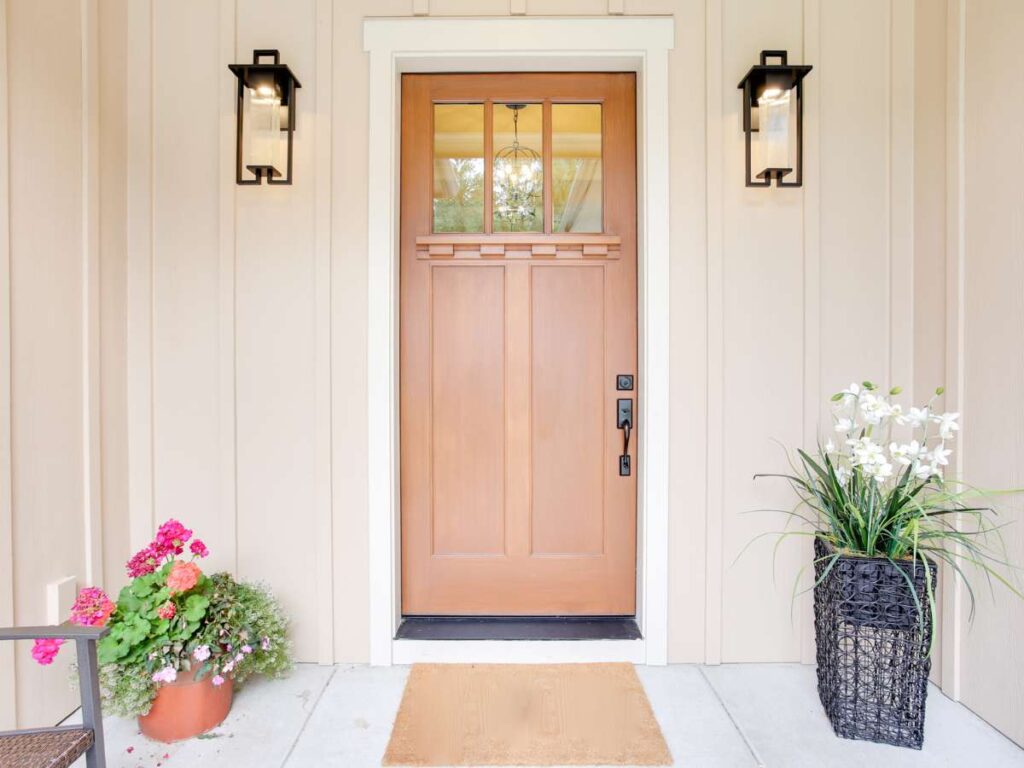
9. Cost Differences
Cost can be a deciding factor for many projects, and I’ve helped clients weigh price against performance more times than I can count. While the cheapest option might seem attractive at first, it can lead to higher expenses later. Knowing where to invest and where you can save will help you deliver better results for your clients.
Exterior Door: Higher Initial Investment
- Material Costs: Built with steel, fiberglass, or solid hardwood, which are more expensive than interior-grade materials. I’ve seen these choices pay off by lasting longer and reducing repair needs.
- Hardware and Security: Comes with heavy-duty locks, reinforced frames, and stronger hinges. These features add to the upfront cost but increase safety and durability.
- Weatherproofing Features: Seals, coatings, and insulated cores raise the price. They protect against costly damage from moisture, temperature changes, and sunlight.
- Custom Designs: Special finishes, decorative glass, or non-standard sizes require more labor and materials. This can significantly increase the total price.
Interior Door: Lower Purchase and Install Costs
- Lightweight Materials: Often made from hollow core or MDF, which keeps manufacturing and shipping costs low. These are suitable for spaces that do not require heavy-duty durability.
- Simpler Hardware: Uses standard handles and hinges that are affordable and widely available. I know this makes maintenance quicker and more cost-effective.
- No Weatherproofing: Skips seals and coatings, saving both material and labor expenses. This is fine for climate-controlled interiors.
- Faster Installation: Lighter weights make them easier to carry, position, and fit. This reduces labor hours and installation costs.
Bottom Line
The higher cost of an exterior door often reflects its durability and ability to handle weather over time. Interior doors offer a more budget-friendly option with simpler materials and faster installation. Choosing the right one comes down to balancing the building’s performance needs with the available budget.
10. 3 Factors To Consider When Choosing Between Exterior and Interior Door
I’ve been part of projects where the wrong door choice caused delays and added costs. Matching the door’s performance to the building’s needs is the best way to avoid problems later. Here are some factors to consider when choosing between the two doors:
Location and Function
Where the door will be placed is the first thing you should decide. Exterior doors need to stand up to weather, security demands, and constant use.
Interior doors, on the other hand, focus on privacy, design, and separating spaces inside. I know that in hotels and villas, using the wrong type in the wrong spot can lead to early wear and expensive replacements. Always start with the location before moving on to design or budget.
Material and Construction
Material choice directly affects durability and performance. Exterior doors often use steel, fiberglass, or solid wood for strength, while interior doors typically use hollow core, MDF, or light solid wood.
Choosing the wrong material for the environment can shorten lifespan and raise replacement costs. Vallisco manufactures interior and exterior doors that are built to match the demands of their placement, using quality materials and construction methods that help extend service life and reduce long-term maintenance needs.
Budget and Long-Term Value
Price plays a role, but it should be weighed against long-term benefits. Exterior doors cost more upfront because they include security features, weatherproofing, and stronger materials.
Interior doors are more affordable and quicker to install, which benefits large-scale projects. The best approach is to invest more where durability matters most and save where lighter use is expected.
Conclusion
That greenhouse job taught me one thing that using the wrong door can cost time, money, and trust.
Now you know the differences in materials, security, weather resistance, and style between exterior and interior doors.
The right choice protects your project and meets your client’s needs. Do not let a simple mistake turn into a long-term problem. Choose with purpose and match each door to its job.
Ready to get the right fit for your next project?
Contact Vallisco today and let our team help you choose the perfect door for your build!
Explore Related Resources
Want to see more? We’ve gathered additional product choices to give you even more variety:
Still haven’t found what you’re looking for? Don’t hesitate to contact us. We’re available around the clock to assist you.



